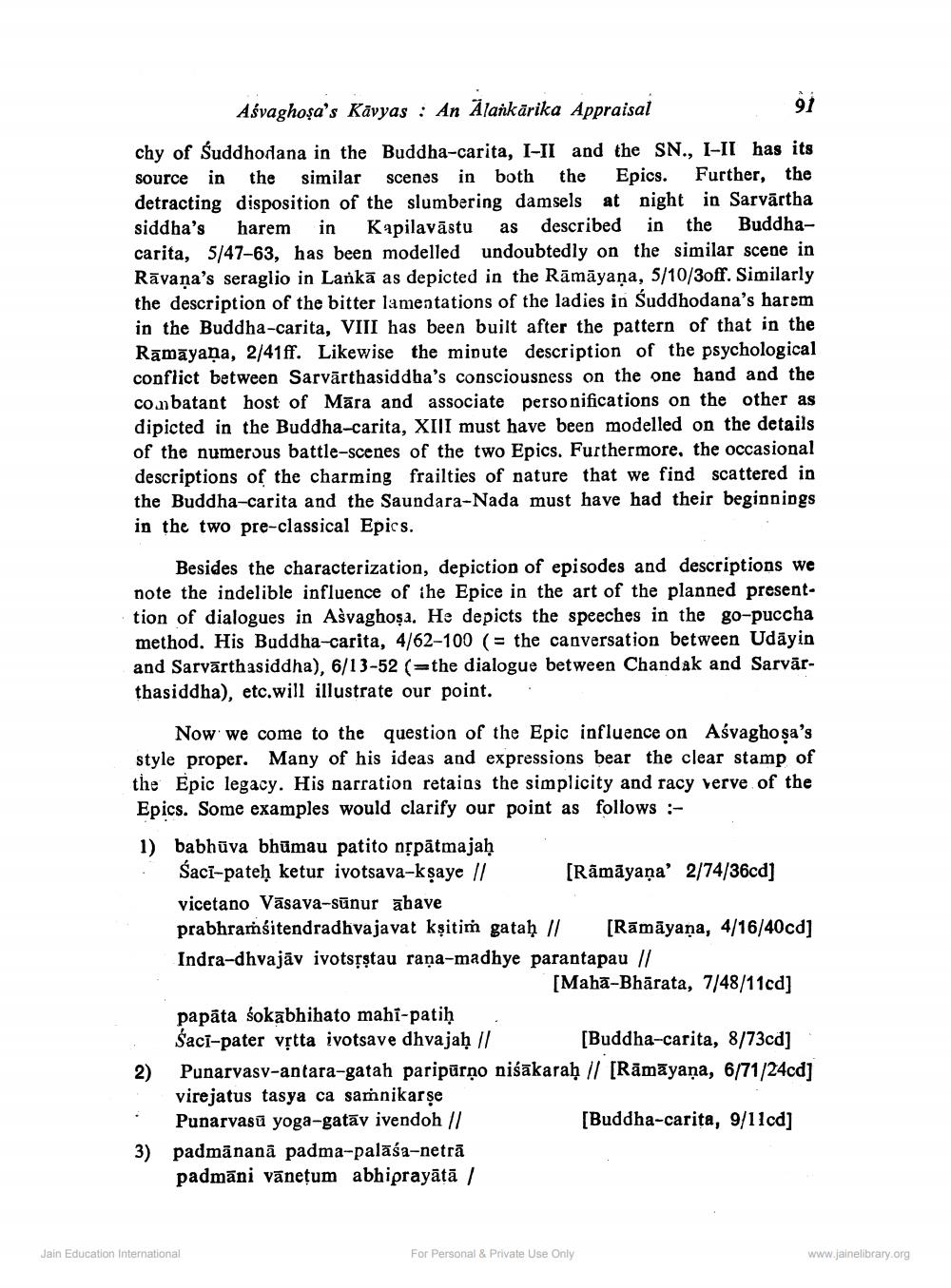________________
Asvaghosa's Kavyas: An Älankärika Appraisal
91
chy of Suddhodana in the Buddha-carita, I-II and the SN., I-II has its source in the similar scenes in both the Epics. Further, the detracting disposition of the slumbering damsels at night in Sarvartha siddha's harem in Kapilavastu as described in the Buddhacarita, 5/47-63, has been modelled undoubtedly on the similar scene in Ravana's seraglio in Lanka as depicted in the Rāmāyaṇa, 5/10/3off. Similarly the description of the bitter lamentations of the ladies in Suddhodana's harem in the Buddha-carita, VIII has been built after the pattern of that in the Ramayana, 2/41ff. Likewise the minute description of the psychological conflict between Sarvārthasiddha's consciousness on the one hand and the combatant host of Mara and associate personifications on the other as dipicted in the Buddha-carita, XIII must have been modelled on the details of the numerous battle-scenes of the two Epics. Furthermore, the occasional descriptions of the charming frailties of nature that we find scattered in the Buddha-carita and the Saundara-Nada must have had their beginnings in the two pre-classical Epics.
Besides the characterization, depiction of episodes and descriptions we note the indelible influence of the Epice in the art of the planned presenttion of dialogues in Asvaghosa. He depicts the speeches in the go-puccha method. His Buddha-carita, 4/62-100 (= the canversation between Udayin and Sarvarthasiddha), 6/13-52 (the dialogue between Chandak and Sarvarthasiddha), etc.will illustrate our point.
Now we come to the question of the Epic influence on Asvaghosa's style proper. Many of his ideas and expressions bear the clear stamp of the Epic legacy. His narration retains the simplicity and racy verve of the Epics. Some examples would clarify our point as follows:
1) babhüva bhümau patito nṛpātmajaḥ
Sacl-pateḥ ketur ivotsava-kṣaye //
vicetano Vasava-sunur ahave prabhramśitendradhvajavat kṣitim gatah // [Rāmāyaṇa, 4/16/40cd] Indra-dhvajav ivotsṛṣtau raṇa-madhye parantapau //
[Maha-Bharata, 7/48/11cd]
2)
papāta lokabhihato mahl-patiḥ
Sacl-pater vṛtta ivotsave dhvajaḥ //
[Buddha-carita, 8/73cd]
Punarvasv-antara-gatah paripūrṇo niśākaraḥ // [Rāmāyaṇa, 6/71/24cd] virejatus tasya ca samnikarṣe
Punarvasa yoga-gatav ivendoh //
[Buddha-carita, 9/11cd]
3) padmanană padma-palasa-netra padmani vänetum abhiprayātā /
[Ramayana 2/74/36cd]
Jain Education International
For Personal & Private Use Only
www.jainelibrary.org




